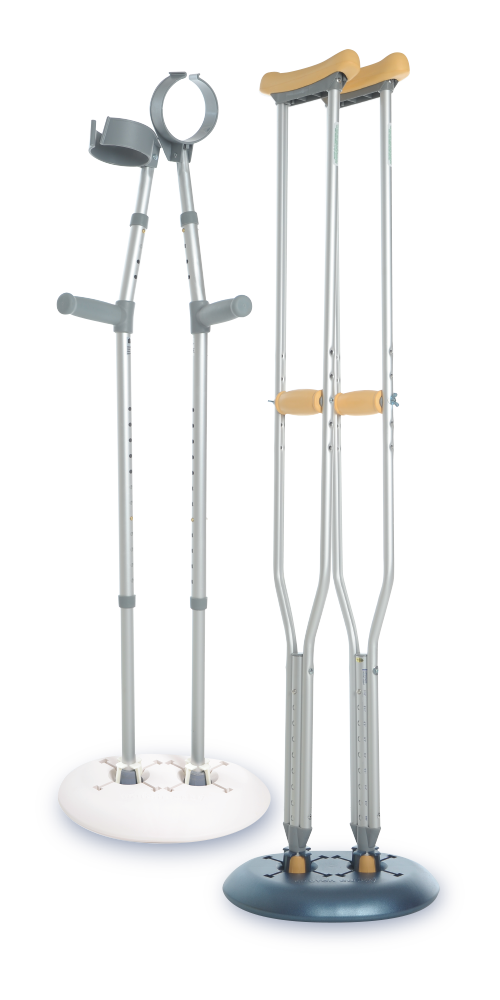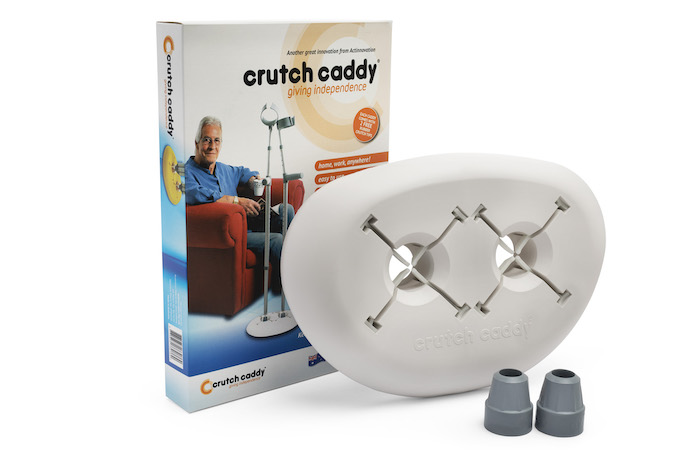I realized the need for this product while working as a volunteer in the Rehabilitation Ward and physiotherapy at the St John of God Hospital in Ballarat, Australia. In my first days there I found that crutches were always propped up in the nearest corner or lying dangerously on the floor where they slid, needing valuable hospital staff to retrieve or replace them for patients constantly. The situation in the physiotherapy room with six patients at a time, all with the same crutches but different heights, was a constant mix up. Also, patients are uncomfortable touching other patient’s crutches.
The Inventor Talks About The Need

Early models of the Crutch Caddy have been in constant use at St John Of God Physio Department for the past 6 years.
At present in rehab wards, patients with hip or knee replacements or serious leg injuries require valuable nursing staff to retrieve crutches, hold them ready for the patient to exit the bed, walk with them to the bathroom to hold the crutches again while waiting for the patient. This procedure is then repeated back to the bed where, after use, the crutches are once again placed in the nearest corner. With a Crutch Caddy the crutches are standing upright next to the patient’s bed whereby the patient can exit the bed and slip their arms straight into their crutches, walk to the bathroom, place them into another Crutch Caddy and once again reverse the procedure back to bed, without help, safely, feeling independent and freeing up busy healthcare staff.
I have seen and heard firsthand, orthopaedic surgeons and physiotherapists holding back patients, particularly elderly or frail patients, from returning home because they live alone, without a carer to help them. So they are retained longer in valuable hospital beds.
Giving flowers is a lovely ‘Get Well’ gesture, but giving a Crutch Caddy is giving them a hand, for as long as needed.

Beau O’Donohue
Designer/Inventor
Ausinnovation Pty Ltd




Manufactured by
Ausinnovation Pty. Ltd.
Australian Patent: 2011349046
USA Patent: 9675145
Japanese Pat: 5984220
Design Patent No: 15720/10
Made in Australia


